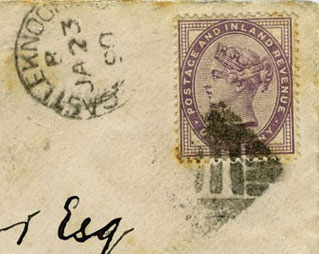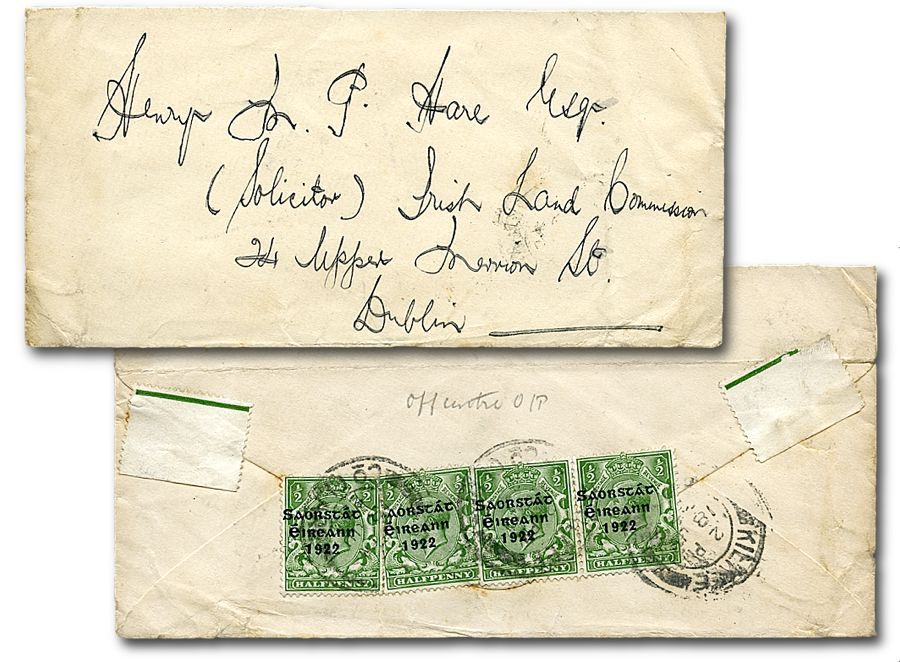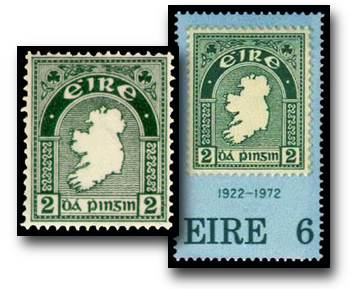Letter from Castleknock — An Irish schoolboy writes home to his father (Part 2)
Part 1 | Part 2
The stamp that Bernard used

The Penny Lilac stamp that Bernard affixed to his cover is one of the most common British stamps of that era: it saw continuous use from 1881 until it was replaced in 1902, when Edward VII acceded to the throne.
Note that the stamp franking Bernard’s cover has no country name: Because Great Britain was the first nation to issue stamps, and the portrait of the young Queen Victoria was universally recognizable (at least in the “civilized” world), it was not thought necessary to identify the country of origin, a custom that continues to this day.
The Penny Lilac stamp represents another “first”: the Customs and Inland Revenue Act 1881 necessitated new stamps valid also as revenue stamps — used to pay legal fees, customs, taxes, etc. — and so the Penny Lilac was issued in that year, inscribed "POSTAGE AND INLAND REVENUE". The Penny Lilac stamp remained the standard letter stamp for the remainder of Victoria's reign, and vast quantities were printed.
There are two varieties of this stamp, the more common, like the one on Bernard’s cover, with 14 dots in each corner angle, and the less common, with 16 dots in each corner angle. The 16-dot variety is worth about 20 times more than the 14-dot variety.
Both a Circular Date Stamp (CDS) and a “killer” postmark were applied at the Castleknock post office. The CDS indicates the time and place the letter was accepted for delivery. A square "killer" cancel, probably carved by hand from a cork bottle stopper, was applied to prevent re-use of the stamp. Note that the impression of the killer cancellation extends over the stamp and the cover, “tying” the stamp to the cover; a stamp that is tied to the cover is proof of a cover’s authenticity; a stamp that is not tied to the cover may indicate that the original cover has been altered to enhance its value.
About that British stamp…
Did Bernard pay more than passing attention to the stamp that he stuck to his envelope? He certainly might have: Stanley Gibbons Ltd., the world’s oldest stamp dealer, opened its doors in 1856; by 1880, stamp collecting was a popular hobby, especially among children. But Bernard might have noticed the stamp for another reason: given that most postage stamps serve their issuing authorities as propaganda, it must have been galling to any Irish Catholic to have to use British stamps.

Since the early 1600s, Great Britain had attempted to crush Irish nationalism through military action, enforced conversion of Irish Catholics to Protestantism and confiscation of their land, enslavement of Irish prisoners, and exile. The enforced use of British stamps in Ireland, starting in 1840, must have been salt in the wounds suffered by patriotic Irishmen. It’s not surprising that on February 17, 1922, just six weeks after the Anglo-Irish Treaty gave gave rise to the Irish Free State, that the first Irish stamps were produced under the authority of the provisional Irish government. Granted, the stamps were British stamps, but they were overprinted in Gaelic — Rialtas Sealadach na hÉireann 1922 — which translates as “Provisional Government of Ireland 1922. Un-overprinted British stamps remained valid for postage in Ireland until March 31, less than seven weeks after the overprinted stamps appeared.
By the end of 1922, the same British stamps were still in use, but on December 11 they began to be overprinted with the Gaelic words Saorstát Éireann 1922, “Irish Free State 1922”.


To add to the confusing circumstances of Irish philately, the first “home-grown” Irish definitive stamp was issued in the week before the stamps overprinted Saorstát Éireann 1922 appeared. Shown at the right, it pictures an outline map of the island we call Ireland, without a hint of national boundaries. Within days of the stamp’s release, however, Northern Ireland successfully negotiated with the British Parliament to retain its ties with England, ensuring that the nationalist Irish Republican Army would continue its campaign of guerrilla warfare to force the Republic of Ireland and Northern Ireland to unite.
Despite the undeniable existence of Northern Island as a separate political entity, the Irish “map stamp,” in a variety of colours, values, and formats, remained in regular use for 46 years.
In 1972, on the stamp’s 50th anniversary, it appeared again as the central design element of a new commemorative stamp.
Part 1 | Part 2